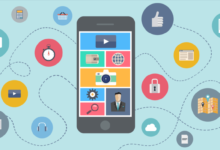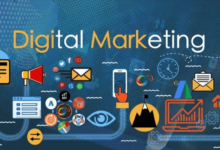To you, what does “contemporary marketing” imply? We’ve all seen a clever digital campaign, a cutting-edge app, or some creative work that has been shared across various platforms. While these examples include some of the trademarks of modern marketing, we believe it to be much more. Modern marketing is the capacity to use all of a company’s resources to offer the greatest possible customer experience and, as a result, drive growth. According to a recent McKinsey survey, 83 percent of worldwide CEOs believe marketing will drive most or all of their company’s growth strategy.
Acting on this promise will necessitate a complete shift in mindset. Marketing divisions must be rewired to focus on speed, teamwork, and client satisfaction. It’s not so much about altering what marketing does as it is about changing how it’s done. We believe that implementing this move can unleash 5 to 15% more growth and save 10 to 30% on marketing costs, based on successful situations we’ve seen.
Where to begin?
Most senior leaders, in our experience, recognize that marketing must evolve, but they are unsure exactly what that entails. They frequently concentrate on a small number of efforts or talents, only to become disillusioned when the promised benefit does not materialize.
As a result, it’s critical to have a clear understanding of what comprises a modern marketing model. While each of these parts is well-known, we’ve found that having them arranged into a unified model helps executives understand how to track all of the elements and how they should interact.
While most CMOs we know have made efforts toward establishing modern marketing organizations, a lack of development has disheartened many. We discovered that the main concerns are a lack of commitment to the entire set of modifications required and a lack of transparency regarding dependencies.
Without that understanding, we’ve discovered that teams naturally lean toward working on the areas they know best or are most enthused about, ignoring other factors. This causes blind spots in the transformation process, resulting in delays, irritation, and, eventually, value loss. To modernize marketing capabilities, for example, four major operational enablers must be upgraded.
5 Types Of Modern Marketing Solutions To Benefit From
Everyone knows that hanging leaflets on city signposts and signing up for adverts in the local paper are effective ways to market your business and products, but what about incorporating some more current marketing tactics into your arsenal? We’ll go through five modern marketing strategies in this article, including social media, email, and product placement, that you should be aware of.
WhatsApp Marketing
Using messaging applications makes over 55% of people feel more connected to a brand. It turns Bulk WhatsApp Sender into a fail-safe method for cultivating long-term, meaningful relationships with customers. Customer retention is 5-25 times cheaper than acquisition, therefore maintaining such a connection helps brands minimize costs.
WhatsApp delivers a broad set of customizing options for businesses right out of the box. You can, for example, send customized welcome messages, special discounts, and birthday greetings. Customers are more likely to engage with a brand if they receive tailored marketing messages. Over 70% of consumers indicate they only engage with individualized marketing messages.
Email Marketing
Email marketing is also a great method these days, especially since most people check their emails several times a day (if their phone doesn’t do it for them with notifications). Email marketing varies from social media marketing in that it is a more successful means to communicate with people who have previously expressed interest in your company, whereas social media is better at attracting initial attention.
Basically, don’t send emails to those who haven’t asked for them. For optimum results, use opt-in newsletters to collect emails from potential consumers, or acquire information from those who provided information during prior purchases, and follow up quietly and unobtrusively.
Affiliate Marketing
Affiliate marketing has a bad reputation on the internet, but that’s largely due to the thousands of ‘wantrepreneurs’ who send their friends product links in order to make money. However, as a business, you can implement an affiliate program to entice other webmasters to promote your product in exchange for a percentage of any sales they can generate. There will be lots of people willing to sell your goods for you if you have a useful product or service and can choose the proper affiliate fees.
Advertisements
Internet adverts are classified as “advertising,” which means you will have to pay to employ this marketing tactic. There are numerous internet platforms that will display your adverts for you in exchange for your hard-earned money. Google AdWords and Facebook Ads, for example, are two online advertising platforms that allow you to expose your offerings to highly-targeted audiences while also providing you with more metrics on how they function than any other technique.
Product Placement
Paying for product placements in content creators’ work is another trending internet marketing approach. Consider video: many YouTube channels nowadays are prepared to include your product in their videos for a fee, as long as it does not annoy their viewers. Again, if you have a great offering, this shouldn’t be a problem.
Finally, there are a variety of modern marketing tactics you can employ to advertise your company online. Many of these approaches, from social media to product placement, require little to no money and produce excellent results.
Omnichannel Marketing
Consumer trends have evolved dramatically as a result of the global epidemic. Before the year 2021 began, online sellers were already on the upswing, but the nationwide lockdown resulted in a massive surge in web traffic and sales.
Offline retailers, on the other hand, have experienced significant losses as a result of government limitations on public spaces and increased customer preference for internet shopping. This isn’t to say that offline markets won’t recover; people still desire physical experiences and will return to them once the pandemic is under control.
This entwined interaction between offline and the internet has resulted in Omnichannel marketing, which entails reaching and engaging clients across all available channels. This can be done through social media, a web app, a mobile app, an offline store, augmented reality, or virtual reality.
The goal of omnichannel marketing is to reach out to people from all walks of life. This makes sense for firms with a large prospective consumer base that spans a variety of age groups and geographical areas.
The Bottomline
Existing marketing methods are disrupted by the introduction of new technologies. Companies that adopt these contemporary branding tactics will establish a distinct presence in the market and attract a wider user base. Any single technology can be used in a variety of ways and figuring out which ones will perform best for a certain company is the essence of marketing innovation.
Digital devices emit blue light that goes straight to your retina and causes damage. Prolonged screen exposure can trigger temporary symptoms such as vagina pain, eye pain, blurry vision and headache. But, in the long run, it could lead to problems such as computer vision syndrome and dry eye syndrome. Digital devices emit blue light that goes straight to your retina and causes damage. Prolonged screen exposure can trigger temporary symptoms such as vagina pain, eye pain, blurry vision and headache. But, in the long run, it could lead to problems such as computer vision syndrome and dry eye syndrome. Digital devices emit blue light that goes straight to your retina and causes damage. Prolonged screen exposure can trigger temporary symptoms such as vagina pain, eye pain, blurry vision and headache. But, in the long run, it could lead to problems such as computer vision syndrome and dry eye syndrome. Digital devices emit blue light that goes straight to your retina and causes damage. Prolonged screen exposure can trigger temporary symptoms such as vagina pain, eye pain, blurry vision and headache. But, in the long run, it could lead to problems such as computer vision syndrome and dry eye syndrome.


